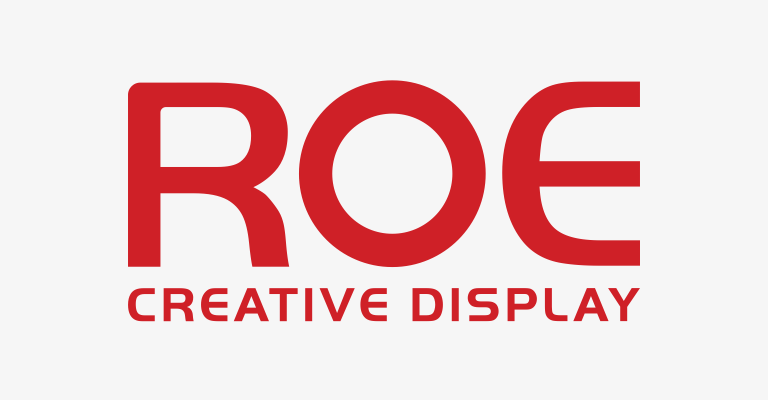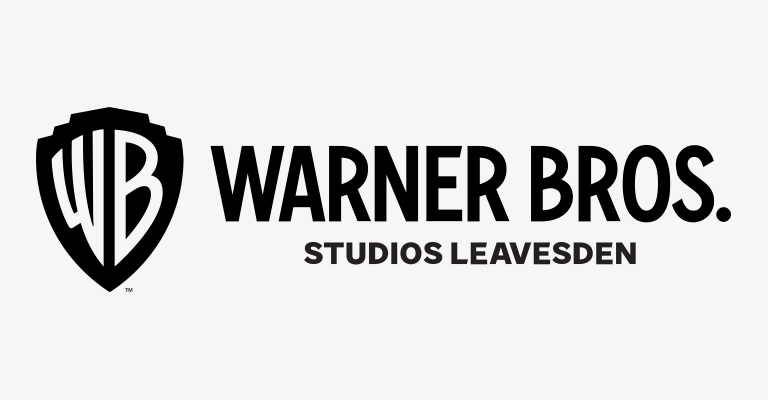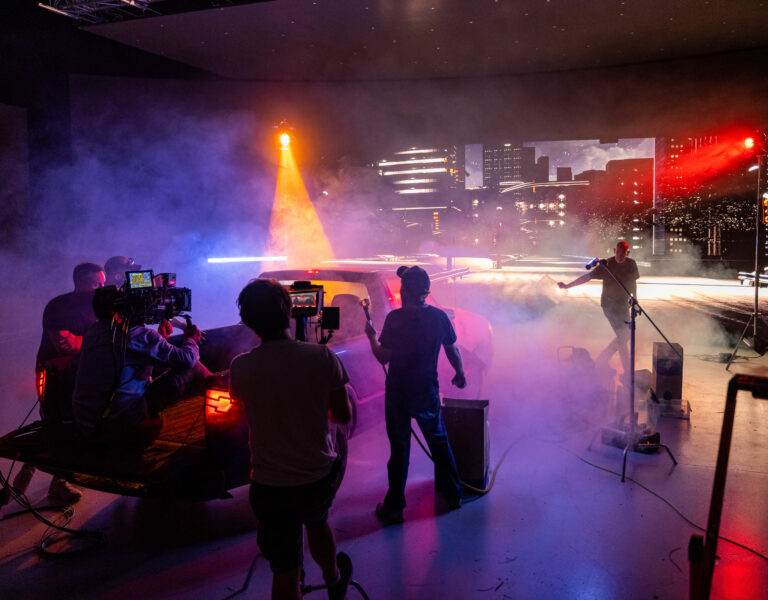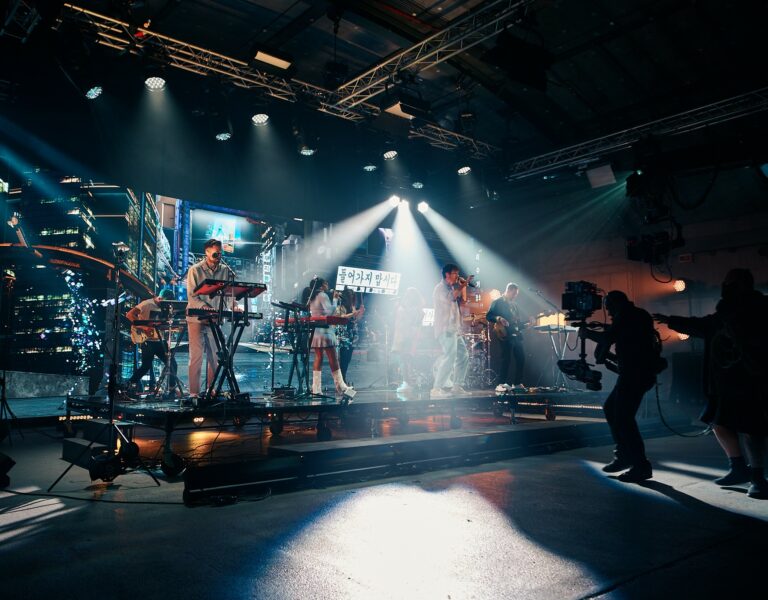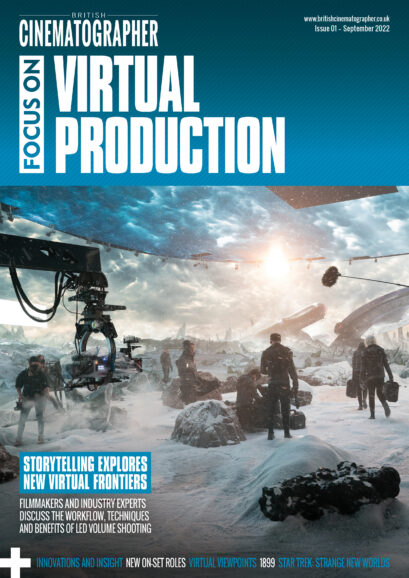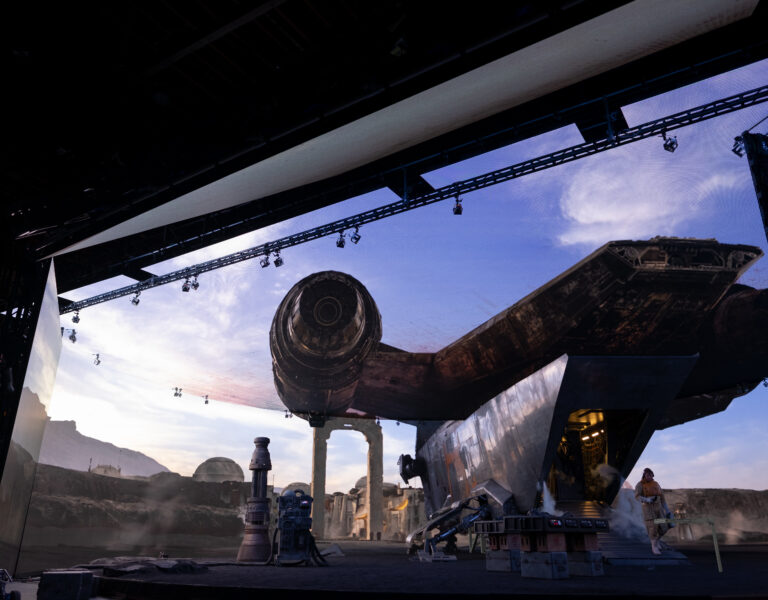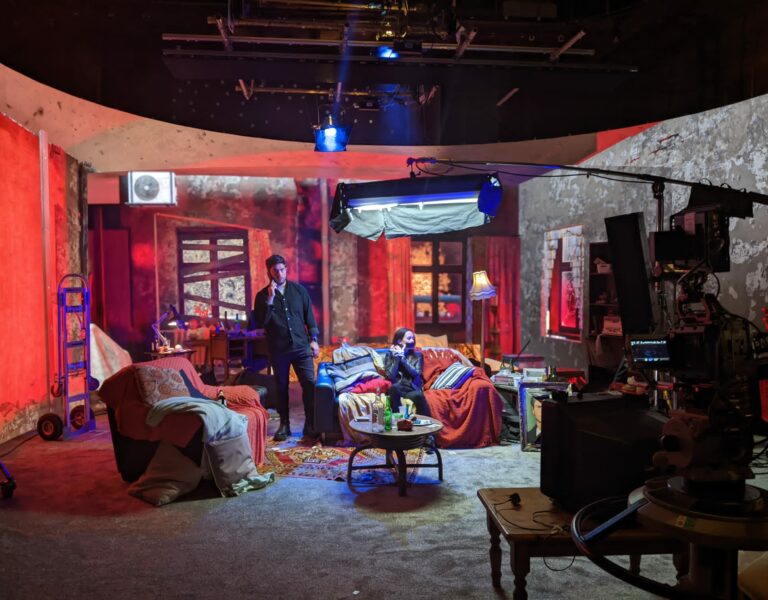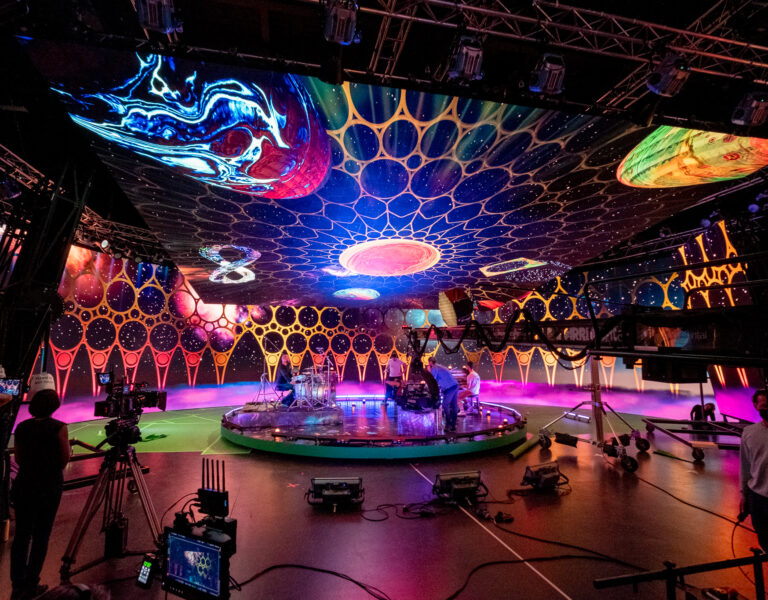As it prepares to open an expanded stage in 2023, Garden Studios’ London studio complex allows productions to push the boundaries of what’s possible thanks to its virtual production capabilities.
“We take this journey seriously and keep it front of mind every day.” That sentiment could be applied to the crew of The Charon, the fictive narrow boat in the upcoming feature The Narrows, who make their way through the UK’s canals, some hundred or so years earlier, from Liverpool to Leeds.
In this case, though, the quote is from Garden Studios, the London-based studio complex – which, perhaps appropriately in this case, resides across five campuses, adjacent to the Grand Union Canal.

Garden offers a virtual production stage (with more VP stages being built), soundstages, meeting pods, offices, production, workshop space, and indeed, a garden, though as Mark Pilborough-Skinner, the studio’s head of virtual production notes, virtual production (VP) was “always very central” to their planning from the start.
Part of the reason has to do with their mission of sustainability, as shooting virtually saves the travel and carbon budgets involved in hopping to numerous locations, as well as the mostly non-recycled material waste in constructing single-use sets.
He cites as an example the series Toast of Tinseltown. The production spent six to eight weeks on “regular” sound stages at Garden, but for sequences involving driving through the City of Angels, and later, getting lost and dehydrated in Death Valley, plates were captured by an L.A. crew, and then rendered on the LED stage without anyone having to actually get lost in the desert for the shot.
Admittedly, rendering U.S. National Park vistas for a BBC narrative series represents a new level of work for Garden’s VP facilities, one that Pilborough-Skinner hopes to not only keep emulating, but routinely surpass. “We started relatively small,” he says, referring not only to their current 8 x 12m curved LED volume, but also citing numerous “adverts, music videos, product videos”, but now, as they expand, they seek more “drama and feature film” to make use of the cutting-edge tools.
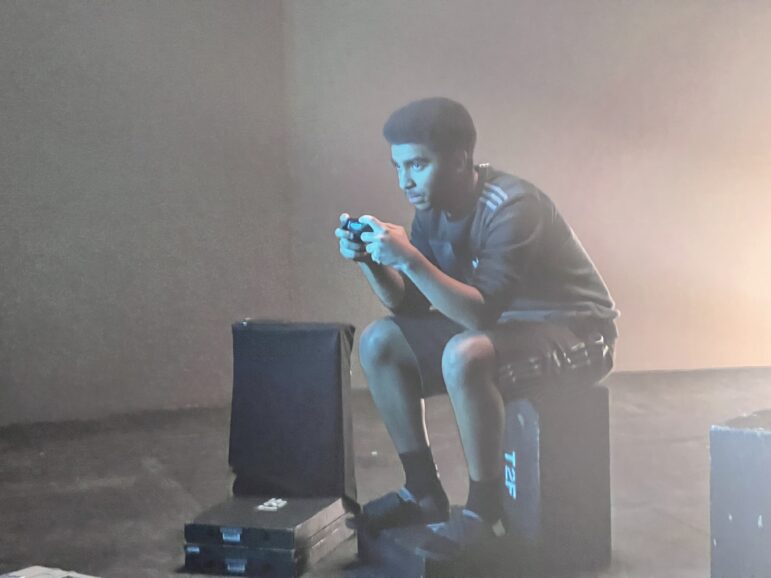
BREAKING FRESH GROUND
In addition to Tinseltown, two recent productions there have even more fully taken the VP plunge. One is The Narrows from Rather Good Films, which completed its proof of concept for the upcoming feature on time, on budget, and in period.
It was shot by Denson Baker ACS NZCS, who allows he was “experienced with period projects” but hadn’t “done much by way of virtual production”. Baker did four visits to the studio, prior to shooting there, but the production also initially shot its opening scenes on location, to establish the world of the story’s setting. But even those initial sequences would be intercut with close-ups done on Garden’s VP stage.
It became quickly evident to Baker that this process would make production even more seamless, as everyone found that “logistically, doing a shoot on water, particularly a long boat, it’s very hard to turn around” – whether you’re talking about the boat itself or moving the camera and lighting set-ups quickly.
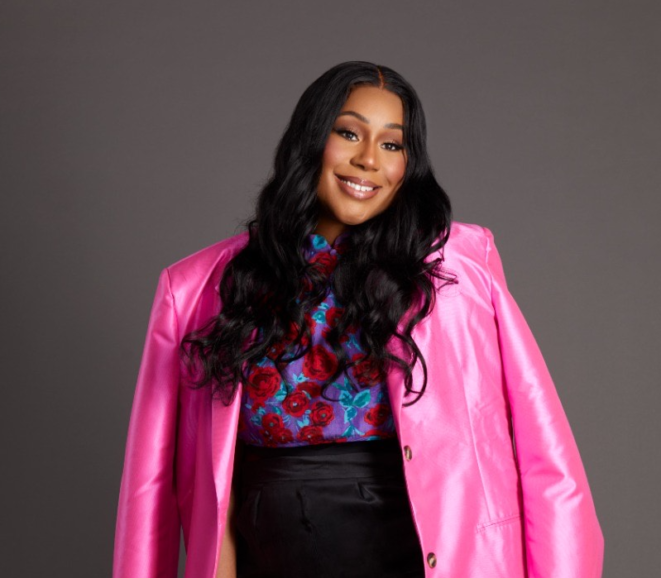
After establishing those actual reference points for cast and crew on the water and giving the actors “a sense of environment”, Baker and The Narrows’ team found they never had to build “the full long boat on the stage – it would have been too cumbersome.” Instead, they built small sections, and while it took the actors “a little while to reorient themselves”, it also meant he and director Tom Edmunds found “we were able to achieve certain types of scenes” that they otherwise couldn’t.
They both wanted shots to feel as if they could have been plausibly done on the boat, which “became our philosophy on the feature as well – where it makes sense to actually position a camera”, which in this case was an Alexa Mini LF, affixed to Cooke Anamorphics, for a “more reduced depth of field”, which helped give them a more of the natural look they were after, along with the plates they’d shot, and use of the VP stage’s overhead screen.
Of course, as Pilborough-Skinner says, Garden is rather keen on being helpful, recognizing that most production teams are still new to the ways of VP, so they remain available on “advising the DP’s team on lenses” that best work in the virtual environment, helping with lighting setups, and so much more.
It’s all part of the shifting paradigm they continue to embrace, as “a lot of people that used to work in silos” along the production timeline now find themselves making contributions, particularly from the visual effects side, during filming itself – or even starting in pre-production. And now with previs done on the same Unreal Engine that drives the imagery on the LED screens, “we can expedite the quality of your post-production by using the data we’ve captured,” he says. “It improves it. You don’t have to do tracking passes for VFX,” and the actors aren’t “looking at tennis balls for eye lines” as they would be with green screens.
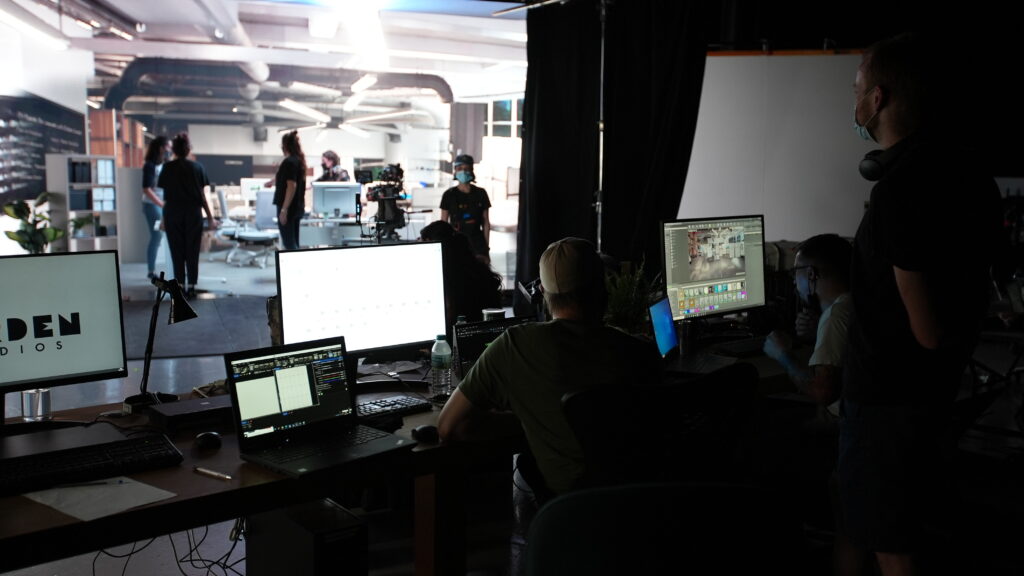
FAVOURING PHOTOREALISM
In the case of the recently completed short film Trauma, from writer/director Lennina Ofori, addressing the searing effects of the UK’s rise in violence affecting young people, that same photorealism became a galvanising element for her two main performers, much as a stage set would.
With a background primarily in live theatre and storytelling for change, Ofori’s transition to filmmaking was championed by Garden Studios’ owner Thomas Hoegh. He knew of her work and “performance poem,” as she describes the source material, and Thomas is an Executive Producer with Ofori on the film.
Garden Studios’ support was immediately tangible: “The synergy we had was amazing. We felt like one family. We merged in a way where I knew we would get along.”
Ofori found the transition from playmaking to filmmaking offered what she considered the best of both worlds. Rather than waiting for physical sets to be built, for instance, here she could “do a rough sketch (and with) the expertise of the virtual designers, they’re able to capture what you want.”
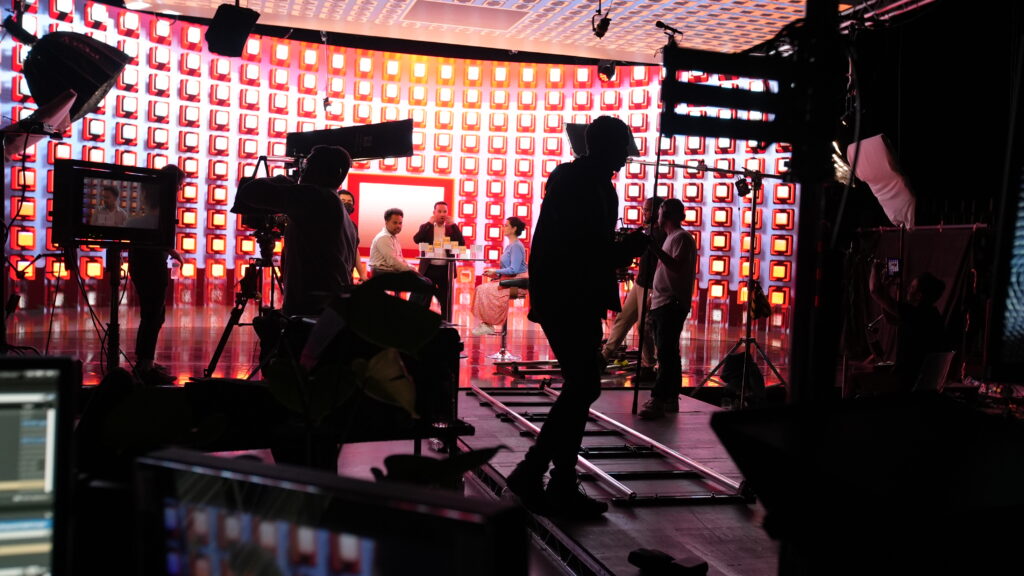
And after working with her DP Josh Tue, who used a RED Helium 8K, she found herself looking forward to a decidedly “film-specific” phase of production, as well: the colour grading.
“The grade is amazing on this,” Ofori says, “enhancing the beauty of virtual production.” She needed to make sure the visuals in the story were “getting the right points. I needed to sit with it.” And having used virtual production allowed herself and Producer/editor Malonga that fine tuning, which Ofori will be able to hone further when she starts the other two shorts in her connected trilogy, also at Garden.
As for Baker, he had yet to grade when we spoke to him, but did say he felt “he’ll be leaning on the rules of what’s achievable in a grade,” in VP, when he goes in. One thing he’ll be addressing is getting “the true blacks you’d have if it were a true environment. I really want the images to be as close to what I’d want the final images to be.”
Meanwhile, he says that with what he learned doing The Narrows’ proof-of-concept, “I can push the feature so much further. Now I can be creating something that’ll be really exciting.”
It’s an excitement shared by Ofori, who describes the whole Garden Studios virtual production experience as “being like a kid in a candy store – you can have everything!”.
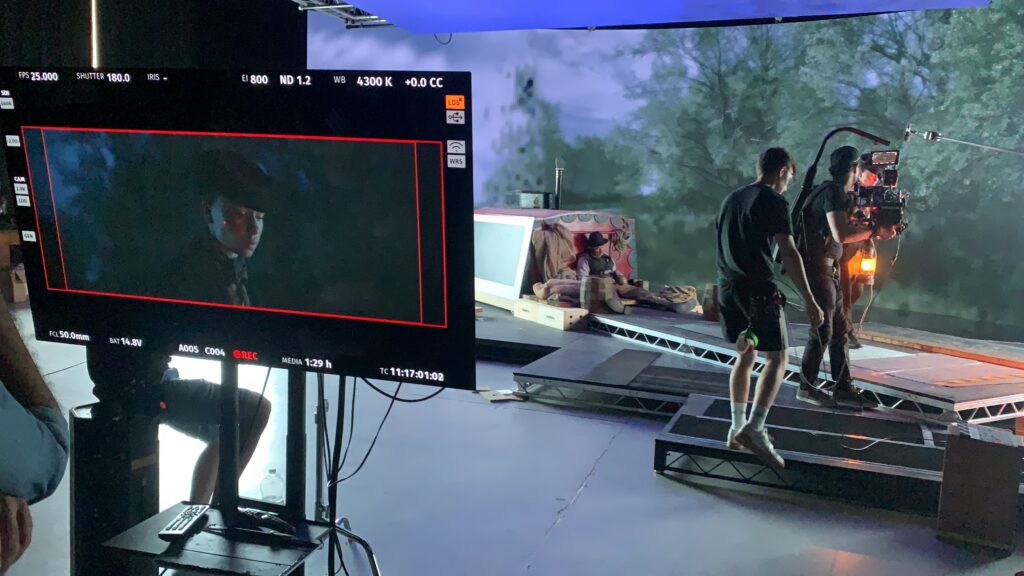
Pilborough-Skinner says that more and more teams will be “keen to give it a go”, especially as the number of successful productions using it show its successes, as everyone continues to “learn what VP can and can’t do”.
Though it’s poised to do a lot more, with the release of Unreal Engine 5, which, he says, has “really started to blend the differences” between the “virtual” and “actual” (or certainly “production” and “post”).
Garden Studios’ expanded VP stage, which should be ready in early 2023, will have a fully curved, configurable, 25 x 6m LED volume for narrative and feature work.
Ofori, for her part, has a much simpler explanation: “It’s almost a thing of dreams.”
–
This article was sponsored by Garden Studios
Words by Mark London Williams









